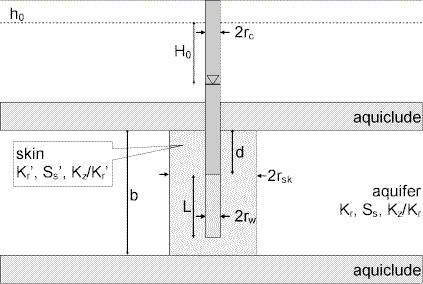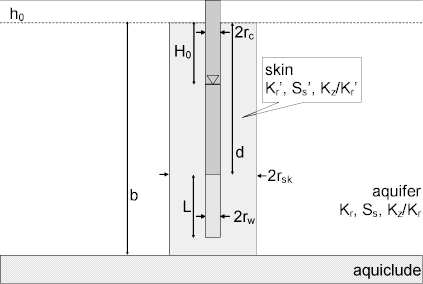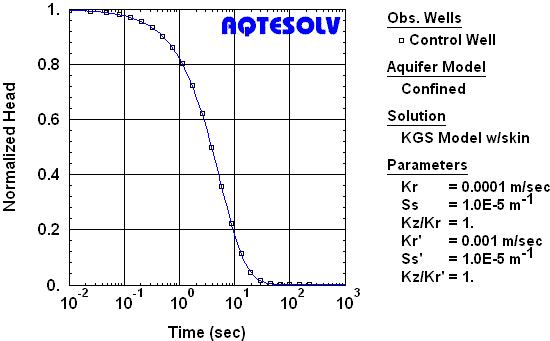Hyder et al. (KGS Model) Slug Test Solution for Confined and Unconfined Aquifers
Related Solution Methods
Additional Topics


A mathematical solution by Hyder et al. (1994), also known as the KGS (Kansas Geological Survey) Model, is useful for determining the hydraulic conductivity of unconfined and nonleaky confined aquifers. Analysis involves matching a type curve solution to water-level displacement data collected during an overdamped slug test.
AQTESOLV provides visual and automatic methods for matching the KGS Model to slug test data. This easy-to-use and intuitive software promotes rapid and accurate determination of aquifer properties.
Assumptions
The following assumptions apply to the use of the KGS Model:
- aquifer has infinite areal extent
- aquifer is homogeneous and of uniform thickness
- aquifer potentiometric surface is initially horizontal
- control well is fully or partially penetrating
- a volume of water, V, is injected or discharged instantaneously from the control well
- aquifer is confined or unconfined
- flow is unsteady
Solution
Options
AQTESOLV provides the following options for the KGS Model:
- partially penetrating wells
- hydraulic conductivity anisotropy
- wellbore skin effect
- observation wells
Benchmarks


References
Hyder, Z., J.J. Butler, Jr., C.D. McElwee and W. Liu, 1994. Slug tests in partially penetrating wells, Water Resources Research, vol. 30, no. 11, pp. 2945-2957.